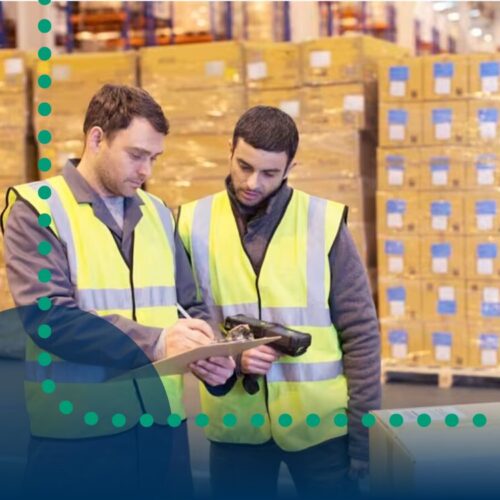
Chances are you probably have at least one of these apps on your phone: Uber, Lyft, Postmates or Grubhub. If you do, you’re embracing the quickly growing gig economy.
The gig economy refers to people who choose to work on a contract basis and move from one job – or gig – to the next rather than securing a permanent position with one company. Recently, many apps have emerged that have made it even easier to connect people in this labor market to short-term or shift-by-shift jobs. Depending on the app, the dispersed gig work can be anything from helping someone move furniture to picking up groceries.
This new way of finding work was fueled by the launch of on-demand ride service Uber in 2010 and now accounts for 34 percent of the workforce. It’s expected to rise to 43 percent by 2020.
But these on-demand work apps aren’t just penetrating service industries. They’re also shaking up industries like manufacturing, transportation and warehousing and storage. These companies can now fill their temporary jobs in minutes with the click of a button. But can these apps really replace the services offered by temp agencies and traditional staffing providers?
That depends. An on-demand staffing app, like Shiftgig or Wonolo, may be able to adequately service your needs if you’re a low-volume user of temporary labor or if the jobs you need filled don’t require extensive training. However, if your workforce strategy relies heavily on contingent workers, these apps may not have the capabilities you’re looking for. Let’s take a look at what differentiates traditional staffing providers from these emerging apps.
Onsite Partnership
Whether you’re using an app or a traditional provider, the quality of the worker provided should be fairly consistent assuming each have thorough screening processes in place.
For example, on-demand staffing app BlueCrew phone screens candidates before inviting them to an in-person interview and orientation. They also provide training and skills assessments for further vetting, and candidates won’t make it onto the app if they don’t meet BlueCrew’s standards.
The limitation of staffing apps lies within the quality of the business partnership. With an app, all communication and transactions exist behind a screen; it’s rare that you’d ever have the opportunity to meet face-to-face with your service representative. This can limit the depth of knowledge the provider has about your company as they won’t be familiar with the way your operation works, the layout of your facility or the unique culture your company has.
And this might be OK if you’re just looking to fill a few last-minute shift openings. However, if you’re looking for a more consultative partner who can help you evolve your workforce strategy as business needs change, then a traditional staffing provider would be a better fit.
A staffing partner that specializes in onsite workforce solutions immerses themselves into warehouse operation to assess your staffing needs and design a tailored strategy to complement those needs.
An onsite partner is also able to closely monitor the performance of your temporary workforce whereas an app-based provider does not have real-time visibility into what’s happening on the floor. This ongoing performance management ensures process efficiency and workforce productivity. It also frees up the time you would have spent managing these workers so you can focus on other core business functions.
Take a look at our suggestions for driving efficiency in warehouse staffing environments.
Workforce Scalability
Your forecast was off for the week and you have more orders to fill than workers to help fill them. Someone calls off – or worse quits – unexpectedly and you have no one to fill in for them. These are the types of scenarios where staffing apps would be beneficial.
On-demand staffing app Wonolo prides itself on the fact that its average time-to-fill is four minutes. When you’re in a bind, staffing apps can supply you with a handful of last-minute workers to help with an unanticipated need.
But what about for frequent fluctuations throughout the year, like seasonal peaks, where you need to ramp up your workforce by hundreds or even thousands? Leveraging a traditional staffing provider that’s experienced with scaling a contingent workforce in a short amount of time is the best option for these situations.
The first thing that traditional staffing providers can provide to aid ease of scalability is workforce forecasting technology. This is another reason choosing a partner who takes a consultative approach is important; they play an active role in analyzing demand patterns and take proactive steps to modify workforce strategies. Workforce forecasting technology helps to more accurately predict future demand and provides actionable insights into areas of your recruitment funnel that need to be adjusted in order to meet that demand.
Another thing traditional staffing providers can provide is dedicated recruitment. When using a staffing app, candidates are screened, vetted and approved to meet the requirements of that specific you’re your candidate pool is also limited to who is registered on the app and, even then, the available workers may not possess the skills you’re looking for. A traditional provider develops customized recruitment strategies based on your business needs and your labor market.
Employment Classification
Workers can either be classified as employees or independent contractors. Here are some of the main differences between the two.
Independent Contractor:
- The work schedule is determined by the worker rather than the company
- Work assignments are accepted or rejected by the worker
- Equipment, tools and other supplies are supplied by the worker
- Workers are typically self-employed so they don’t qualify for benefits such as health or life insurance or some other company perks
Employee:
- The work schedule is determined by the employer and it usually consists of a fixed amount of hours
- The workload is assigned by a manager and the worker is expected to complete it
- Equipment, tools and other supplies are provided by the employer
- Employees typically qualify for benefits such as health and life insurance
The way workers are classified has a major effect on the type and amount of taxes their employer has to pay. Most workers taking advantage of the gig economy are classified as independent contractors rather than employees of a specific company.
An independent contractor receives a 1099 form and is responsible for calculating their own taxes and submitting them to the government. An employee receives a W-2 form and their employer is responsible for deducting taxes and paying the government.
Companies can benefit from classifying their workers as independent contractors because they can cut costs by avoiding payments of employee taxes and benefits. While some claim their workers are independent contractors because they structure their own schedules had have limited oversight, courts are challenging how fair this practice is. Because misclassification can rob workers of certain protections and benefits, employers who misclassify their workers face wage law violations and other fines.
While most staffing apps classify their workers as independent contractors, some have made the transition to classifying them as W-2 employees. Wonolo, for example, launched both options on its platform in 2016, although W-2 positions are limited, and both Shiftgig and BlueCrew classify their workers as W-2 employees.
In contrast, most traditional staffing providers classify their workers as W-2 employees. This can be advantageous for several reasons:
- The benefits typically offered to full-time employees can help increase retention
- A more permanent status can help workers assimilate into your company culture rather than feeling disconnected
- It eliminates the risk of being misclassified as 1099 and the penalties associated with it
An App or a Traditional Staffing Provider?
The answer isn’t simple. Each solution brings their own benefits to the table, so the best option depends on your individual staffing needs. If you’re looking for quick help and only need a few workers, then an app may be the best option. But if your operation requires a scalable workforce and a hands-on partnership, then a traditional staffing provider is best.
Traditional staffing firms are also entering the ring by launching their own apps to better position themselves against their emerging competitors. Soon, a traditional staffing provider may be able to provide you the best of both solutions.
Have you determined that your facility needs a larger workforce? Check out our case study Comprehensive Onsite Support Results in Successful Peak Season to find out how we provided our client with a tailored contingent workforce strategy and nearly 4,000 associates in a month.



